If You’re Still Doing Bicep Curls to Build Arms After 40, You’re Doing It Wrong
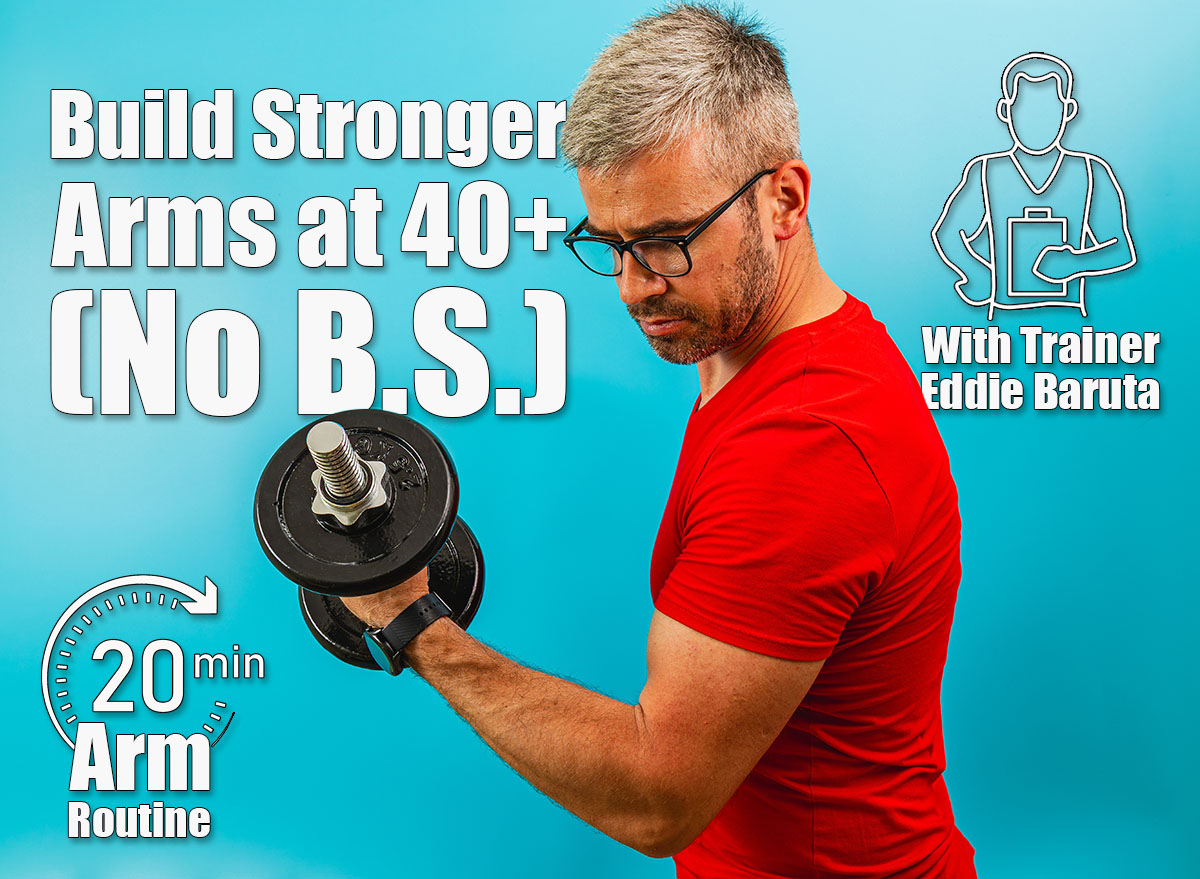
Plain and simple, building muscle can be challenging after 40. The great news is, it’s totally possible to achieve with just the right workout plan in place. In fact, developing stronger arms can be much easier than you may think.
Let’s first address the reasons why building muscle is more difficult to accomplish at this age. First off, muscle mass decreases after your 30s and your body takes longer to rebuild and repair muscle tissue. In addition, your joints lose strength and lower testosterone levels negatively impact muscle protein growth.
We spoke with Eddie Baruta, celebrity PT and global head of gym floor personal training at Ultimate Performance, who explains common myths and helpful tips to build strong arms.
Myths About Building Strong Arms After 40
Performing a ton of bicep curls is not the way to build big, strong arms after 40.
“This is not only ineffective but also short-sighted,” Eddie explains. “Many people mistakenly isolate their biceps with ego-lifting—choosing weights that are far too heavy and using momentum rather than proper form. What they often fail to realize is that arm size and strength are significantly influenced by total lean body mass and full-body training. It takes an additional 10 to 15 pounds of lean body weight to add just an inch to your arm’s circumference, which highlights how crucial whole-body development is for arm gains.”
Another misconception is that your biceps are the most essential muscle group to achieve bigger arms.
“In reality, the triceps make up more than two-thirds of the upper arm’s mass,” Eddie tells us. “Neglecting triceps work in favor of biceps curls is a common mistake. Comprehensive arm development—especially for individuals over 40—demands thoughtful, balanced programming, including both compound lifts and specific isolation exercises.”
5 Tips To Boost Arm Strength
After 40, building arm strength consists of consistency, recovery, and savvy training principles. Here are a few pointers to keep in mind.
Prioritize full-body strength training.
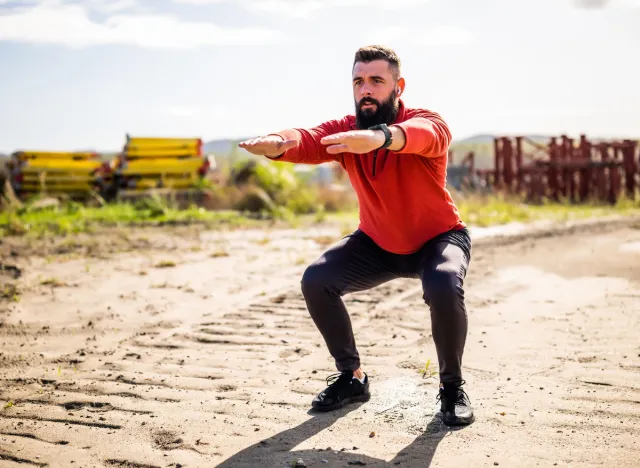
“Compound lifts like squats, deadlifts, bench presses, and chin-ups not only build overall muscle mass but also indirectly contribute to arm size by raising total lean body mass,” Eddie tells us.
Dedicate specific workout sessions to arm training.

During a four-day training split, Eddie recommends dedicating one to two weekly workouts specifically to arms.
“This ensures direct stimulation of both biceps and triceps for hypertrophy,” he says.
Train your biceps and triceps equally
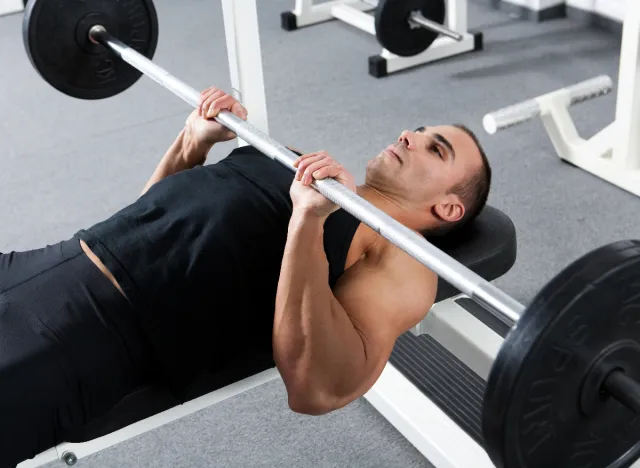
“Since triceps account for the majority of arm mass, incorporating exercises like close-grip bench presses, dips, and skull crushers is critical,” Eddie points out. “Don’t fall into the trap of training only what you see in the mirror.”
For clients over 40, Eddie recommends a variety of carefully curated movements that prioritize both safety and hypertrophy. Some examples?
“Key go-to moves include the EZ-bar preacher curl for biceps and the close-grip bench press for triceps. These are paired together in an antagonistic superset (a training technique where you pair two exercises that work opposing muscle groups and perform them back-to-back with little to no rest in between), which not only saves time but also enhances neuromuscular efficiency,” he says. “I would also strongly recommend the 45-degree dumbbell curl and incline dumbbell triceps extension, as both offer effective ways to hit both muscle groups from different angles.”
Maintain an even tempo and emphasize time under tension.
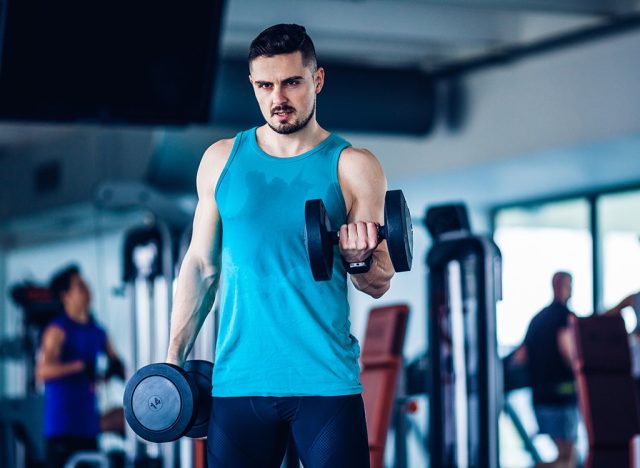
As you enter your 40s, movement quality becomes more important than ever before.
“Slower, more controlled reps with full range of motion create greater muscle stress and are much safer for joints and tendons that might be more vulnerable with age,” Eddie explains. “I would emphasize training with a controlled tempo (take three seconds to lower the weight, pause for a second, then lift explosively back up) and a full range of motion, which often necessitates reducing the weight used. Increasing the time under tension, even with moderate loads, can be more productive for muscle growth.”
Track your body weight.
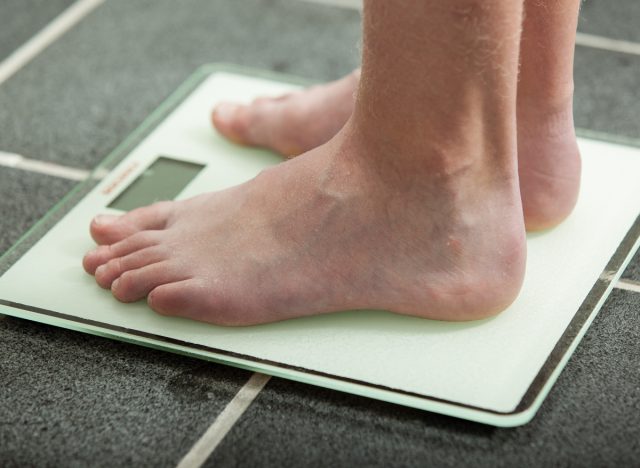
It’s common to have smaller arms if you’re underweight.
“By increasing lean muscle mass across the body, you’ll naturally support bigger and stronger arms,” says Eddie.